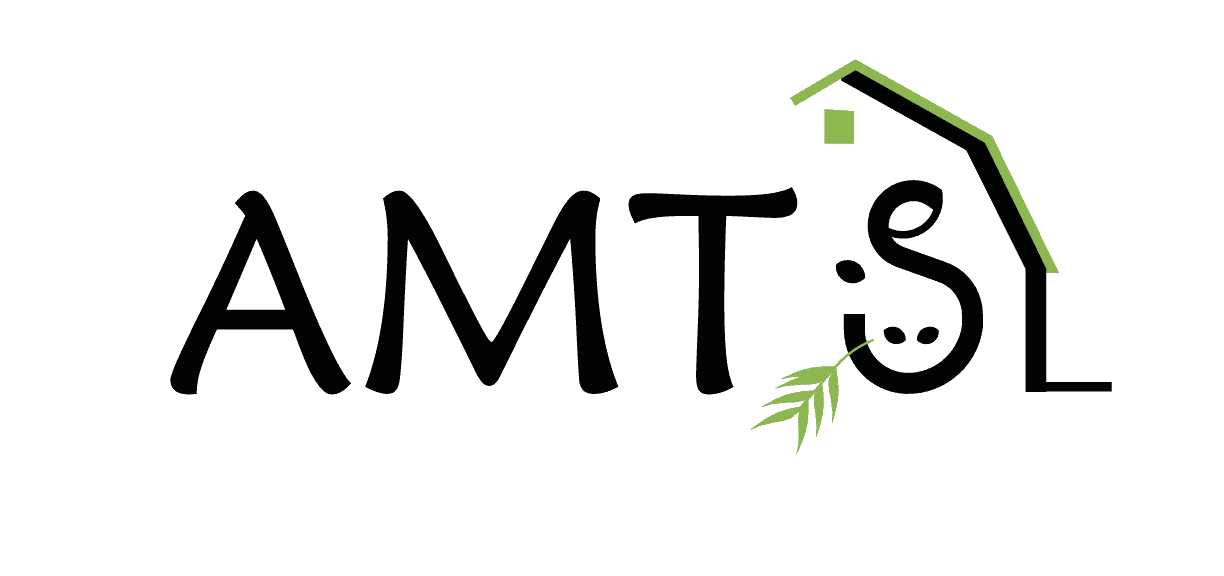There has been a hidden gem in AMTS.Cattle.Pro for the past 15-18 months. We have been keeping it quiet while some evaluations were conducted. This is a system for feeding milk fed calves. It represents a combination of the 2001 Dairy NRC Calf Model, publications from Van Amburgh and Drackley, and internal AMTS development.
Developing this system has been very challenging. Why?
- Dairy (35-60 days on milk) vs beef 60-180 days on milk
- Begin with no rumen and evolve to full ruminant at weaning
- No milk intake prediction equations
- Non-milk intake prediction equations: extrapolation to smaller body weights
- The prediction equations for retained energy and protein are very different between pre- and post-weaning.
One of the largest challenges was the last one listed. For example, the following graph portrays the retained energy (Mcal/d) for an ADG of 500 g. The X axis is body weight (30-200 kg) and Y is retained energy (0-1.8 Mcal/d). The solid line is the prediction from the 2001 Dairy NRC for the milk fed calf whereas the dotted line is the prediction using the growing heifer equation. These two lines never meet!
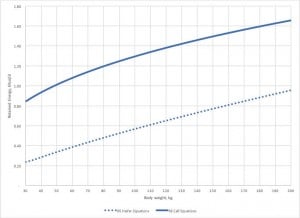
In the Dairy NRC (and other models), a nutritionist would first define a milk fed calf and then create a new group for post-weaning. That change would move the animal from the solid line to the dotted line resulting in very different energy (and protein) requirements just because the calf was no longer fed milk! This is not biologically correct. Nor is it mathematically correct.
The protein requirement for gain also is inconsistent. The Dairy NRC calf model uses a fixed protein content of gain whereas the growing heifer/steer equations relate protein content of gain to retained energy content and stage of growth. Thus, for 500 g ADG, we would see something like this graph.

To address these issues, we derived new equations for retained energy and protein. The objective was to make a continuous function that allowed the nutritionist to model any milk fed calf (either dairy or beef). In doing so, we addressed many concerns regarding the NRC calf model (including under-predicting protein requirements). The resulting retained energy graph for 500 g ADG looks like this:

And for MP gain requirements:
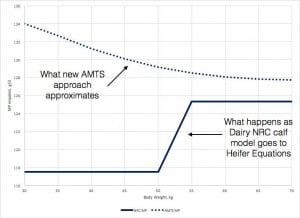
In general, the Dairy NRC (and the Beef NRC) partially account for environment on requirements. With growing cattle, given that the Dairy and Beef NRC are basically the same systems based upon the CNCPS, there is more attention paid to the environment. However, the impact of heat stress is typically ignored. The Dairy NRC calf model only adjusts for cold stress. Yet we know that cattle are sensitive to both. CNCPS adjusts for both cold and heat stress. Using similar thinking (that the slope increase for heat stress is the same as the slope increase for cold stress), we applied a heat stress adjustment to the calf maintenance energy requirements. These adjustments would look like the following graph (X axis = temperature, Y = % increase in maintenance, solid line is calves < 2 mo old, dotted line is calves < 2 mo old).
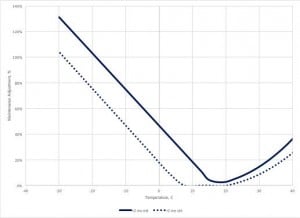
Amino acids are addressed factorially as any growing animal in AMTS. Minerals are implemented per Dairy NRC for growing animals.
Given that the Diary NRC does not provide DMI predictions for the milk fed calf (and we could not find any in the literature!), we implemented a very simple system. A predicted DMI as %BW varies with age. In the very young calf (only consuming milk), the predicted DMI would be at least 2% BW, for example, a 100 pound calf being fed 8 quarts of whole milk per day.
ME supply from milk is calculated similarly to the Dairy NRC calf model. One very large difference though relates to fat digestibility. Dairy NRC assumes all fats are equally digestible. In CNCPS, fat digestibility is estimated based upon the fatty acid profile of a feed coupled with individual fatty acid digestibility factors. Given the wide range in fatty acids found in milk and milk replacers, we adopted the CNCPS approach. Thus, differences in fatty acid profiles will result in different ME values.
Protein digestibility from liquid feeding is assumed to be 93% in the Dairy NRC calf model. This assumes all high quality milk proteins. In developing the feed library for this section, we went to literature data for different protein sources used in milk replacers. Based upon this published data, protein digestibility varies by feed.
So, with all of this done, does the AMTS calf model work?
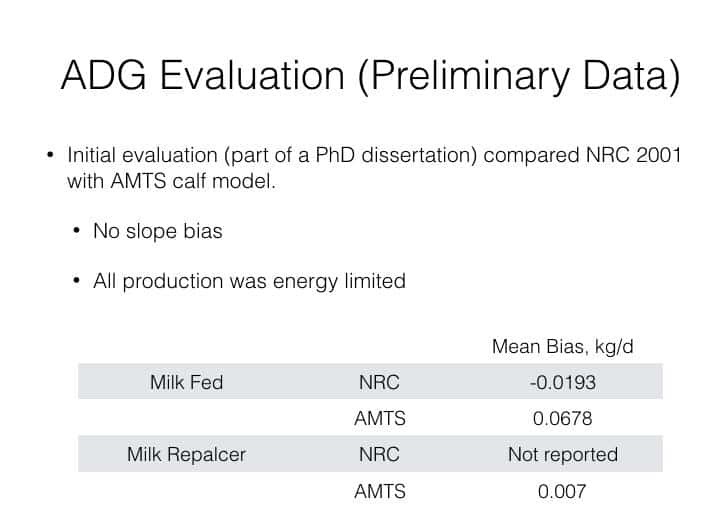
How to use the calf model within AMTS.Cattle.Professional
Firstly, there is NOT a special “Calf” animal type. Why?
- from a program point of view, we cannot determine when a calf becomes a non-calf.
- Reality is weaning. But wait:
- 42-90 days for dairy but
- 42-200 for beef!
- SO there is no such thing as a calf in AMTS. They are either a replacement heifer or a grow/finish animal.
Steps:
- Create a location for calves.
- Only need to input the average current temperature
- Create a cattle group (or many) in this new location
- Define the calf group
- Age can be as low as 0.10 months
- Bodyweight and ADG should be inputted to represent the group
- Breed will impact maintenance coefficient just as it would in any group
- Mature weight, age of first calving, etc. all impact target growth per replacement heifer calculations
- Define the calf group
- Select Feeds
- VERY IMPORTANT NOTICE:
- There is a new classification of feeds: Calf Liquid Feeds (CLF)
- selecting a CLF invokes many changes within the model to totally by-pass the rumen. DO NOT USE THESE FEEDS EXCEPT WHEN FORMULATING OR EVALUATING MILK FED ANIMALS!
- There is a new classification of feeds: Calf Liquid Feeds (CLF)
- Select appropriate CLF
- All other feeds (for starters/growers/etc) use the standard rumen model. Select as appropriate and formulate
- VERY IMPORTANT NOTICE:
To me, formulating for calves is very simple. Formulate them as if you were formulating for the high cows. The calves requirements are very similar, just in a concentrated package.
IF you are working with cow/calf, define your beef cow as a cattle group. To determine milk volume and composition, after you input all other inputs (BW, breed, days since calving, age, etc.), there is a prediction!
- ON the beef cow group of interest:
- RIGHT CLICK anywhere
- Select the following:
- Run Beef Milk Calculator
- If you want to use the predicted milk and composition, simply click on YES and these values will be inputted.
- Add Whole Milk CLF as a feed and input the analysis from above
- remember you have to convert from As Fed to Dry Matter!
- Here is a little spreadsheet to help!
- [embeddoc url=”http://staging.agmodelsystems.com/wp-content/uploads/2015/11/Milk-conversions.xlsx” viewer=”microsoft”]
- remember you have to convert from As Fed to Dry Matter!
- Now also create a calf cattle group.
- on the recipe screen, add Milk to the recipe
- for milk intake, input up to the cows milk production predicted above.
If you have any questions about the AMTS calf model, please contact Support or Tom
